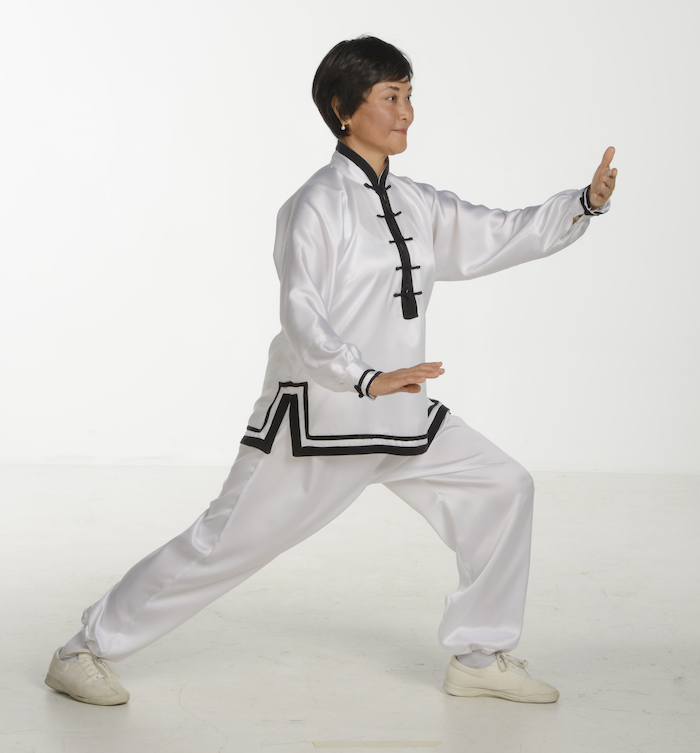Living through two different cultures, experiencing different life styles, and seeing so many suffer from depression, I have seen that most people struggled with a lack of internal strength dealing with life’s stress.
Internal Strength
When I speak of internal strength, I think of a person who has a balance in their body, mind, and spirit. A person who can deal with life’s stress in a positive, productive way. A person who can live with the principle of Dao—the balance of Yin and Yang.
Nothing is easy in our life journey, but we need to know how to make it easy. From many years of studying Daoist philosophy and practicing tai chi and qigong, I finally understand the Way—flowing energy (opposite to stagnation). That is why I wrote the book Tai Chi for Depression. While practicing tai chi you can be in the moment, feeling a sense of peace and balance, feeling universal energy, and embracing that energy to build inward tranquility and strength.
Many of my students benefit from tai chi and qigong practice. Here is an example:
“I came to Dr. Kuhn’s tai chi program, a newly divorced 60-year-old women, broken, anxious, sad, confused, medicated and clinically depressed—I slogged through my day working, eating (barely), sleeping (hardly) and often feeling invisible to those with whom I interacted.
Waves of sadness overcame me often as cried quietly in my car. I waited patiently for six weeks for Dr. Kuhn’s January tai chi class to begin. I remember initially being relieved to have a place to go every week.
The first thing I recall about the class was her kind, nurturing presence; the second was her teaching me how to breathe. Learning specific positions and breathing techniques while paying attention to my body allowed me to get outside of my head. I began to memorize the gentle, flowing, slow-paced movements of tai chi with her constant reminder “not to forget to breathe.”
Her classes were intense as we learned, yet the focus was always on having fun and going with the flow. What a life lesson! She still could tell if I was too tense in my form, and the gentle reminders gave me my present body awareness. Soon my sadness was pushed aside, and bursts of happiness began to emerge. My anxiety lessened as I practiced the form, and I began to laugh more and more and began to feel like my old self again!
Practicing tai chi regularly is an ideal way for me to relax and destress. The slow fluid movements, with concentrated deep breathing, eventually helped clear the dark veil that had enveloped me.
I am eternally grateful to Dr. Kuhn for her guidance and wisdom. I owe my good health and recovery to tai chi!”—Tricia P.
Taiji Sixteen-Step Form for Healing and Preventing Depression
Taiji practice can minimize the symptoms of depression and helps to prevent it altogether. I have seen people changed from years of practicing this form of taiji and other forms as well. The deeper you learn taiji, the better you feel.
I created this unique therapeutic form Taiji Sixteen-Steps Online Video,by combining Chen-style taiji, Yang-style taiji, qigong, martial arts, and meditation as a special practice for healing. It “only” took me over ten years to create this healing form of taiji and to find the right music for this specific form. This form comes from a lifetime of studying the Chinese healing arts, taiji, qigong, martial arts, and meditation. And it springs as well from my passion for helping people with natural methods.
The Characteristics of This Taiji Form Are as Follows:
- It is short, easy to learn, easy to remember, and easy to practice.
- Circular movements create better energy flow in the body.
- The martial-arts characteristic empowers the mind, strengthens the body, and improves stamina and self-esteem.
- Symmetrical movements balance both sides of the brain to harmonize brain activity.
- The sophisticated movements involve learning that stimulates brain functions.
- The slow and balanced movements calm and balance the brain chemicals, increase serotonin level, and reduce noradrenalin level (according my hypothesis), which acts as a “natural tranquilizer.”
- The moderate amount of physical movement involved enhances energy flow in the body and improves daily energy levels.
- The localized steps require a small space to practice (it can be practiced indoors if the weather is bad).
- The coordinated, soothing, and open-frame movements (also called big frame—as those with arms out to the sides) improve coordination and balance, open energy channels, and help you to open up to nature.
- Most movements are slow, soothing, calming, graceful, and peaceful, but several movements are fast and powerful. Because depression can be accompanied by anxiety, the slow movements address the anxiety, and the fast movements address the depression.
- The kind of peaceful calming music I recommend to accompany this form adds another healing dimension to this holistic practice.
- The localized steps require a small space to practice (it can be practiced indoors if the weather is bad or in winter.)
This form is helpful for people who suffer from all types of depression, including depressed moods, depression with anxiety, and mild to moderate depression. Most importantly, it can help to prevent depression. The theory is that the specially choreographed movements following special music harmonizes the biochemicals in the brain that make you feel that you are gaining power and able to control your emotions and your life in general. You often feel better immediately after practice.
It can help you relieve stress and improve your daily energy level, immune function, and mental clarity. While you are learning taiji, you’re not just learning the exercise movements you are also learning how to use taiji to balance and enrich your life.
The above is based Dr. Aihan Kuhn’s December 2010 newsletter and her book, Tai Chi for Depression, publication date, June 2017, YMAA Publication Center, ISBN 978-1-59439-520-8.







